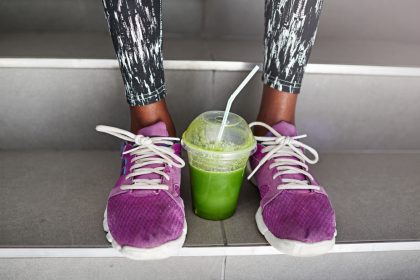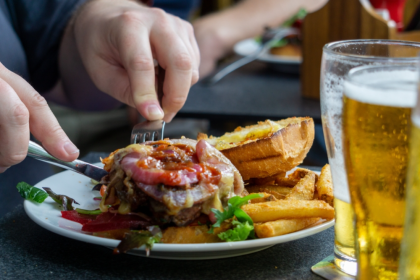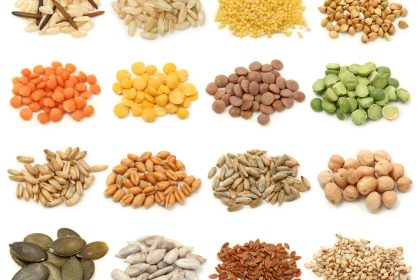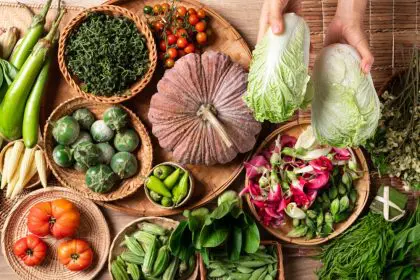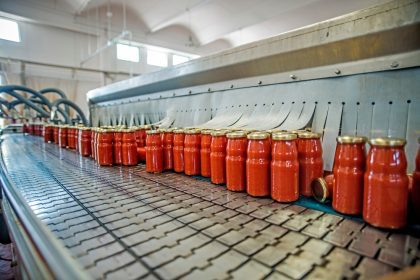You’ve been tracking calories religiously, hitting the gym consistently, and making what you think are healthy food choices, but the scale refuses to move in the right direction. Before you blame your metabolism or genetics, take a hard look at your kitchen pantry – some of the most innocent-looking ingredients sitting on your shelves might be quietly undermining your weight loss efforts in ways that would shock you.
The problem isn’t necessarily the obvious culprits like cookies or ice cream that you know are diet disasters. It’s the seemingly healthy or neutral ingredients that sneak into your meals every day, creating hidden metabolic roadblocks that can stall weight loss even when you’re doing everything else right. These stealth saboteurs are often disguised as health foods or cooking essentials that no one would suspect of derailing a diet.
What makes these ingredients particularly frustrating is that they’re often recommended by well-meaning friends, featured in healthy recipes, or marketed as diet-friendly options. You might be adding them to meals thinking you’re making smart choices while actually creating conditions that make weight loss nearly impossible, regardless of how hard you’re working in other areas.
The cooking oils that are calorie bombs in disguise
Most people drastically underestimate how much oil they’re using when cooking, and even healthy oils like olive oil or avocado oil pack 120 calories per tablespoon – calories that add up faster than you can say “light sauté.” A seemingly modest amount of oil for cooking vegetables or preparing salad dressing can easily add 300-500 hidden calories to your daily intake.
The problem gets worse when you’re using oils for multiple cooking steps in the same meal – sautéing onions, cooking protein, and dressing salads can create a caloric avalanche that completely destroys your calorie deficit without you realizing it. Many people count the calories in their food but forget to account for the cooking medium that’s adding substantial energy density to every bite.
Even worse are the cooking sprays that claim to be “zero calorie” but actually contain calories that don’t have to be listed on the label due to serving size regulations. Using these sprays liberally throughout meal preparation can add significant hidden calories that never get tracked but definitely get stored as fat.
The condiments and sauces creating caloric chaos
Ketchup, barbecue sauce, salad dressings, and marinades are often loaded with hidden sugars and calories that can turn healthy meals into diet disasters. A few tablespoons of seemingly innocent condiments can add 100-200 calories to a meal while also triggering blood sugar spikes that promote fat storage and increase hunger.
Many people use condiments and sauces as “free” flavor enhancers without realizing they’re essentially pouring liquid calories onto their carefully portioned meals. That grilled chicken breast and steamed vegetables might be perfectly diet-appropriate until you add the honey mustard dressing or teriyaki glaze that doubles the caloric content.
The sugar content in many commercial sauces and condiments can also disrupt insulin sensitivity and create cravings that lead to overeating later in the day. Even small amounts of these hidden sugars can interfere with your body’s ability to efficiently burn fat and maintain stable blood sugar levels.
The nuts and seeds that seem healthy but pack serious calories
Nuts, seeds, and nut butters are nutritious foods that can absolutely be part of a healthy diet, but they’re also some of the most calorie-dense ingredients in most kitchens. A small handful of almonds contains about 160 calories, and most people’s idea of a “small handful” is actually closer to two or three servings.
The problem with nuts and seeds is that they’re easy to mindlessly overeat while cooking or snacking, and their calories add up incredibly quickly without providing much satiety per calorie consumed. Sprinkling nuts on salads, adding nut butter to smoothies, and snacking on trail mix can easily add 400-600 calories to your day without significantly impacting hunger levels.
Nut butters are particularly problematic because serving sizes are tiny compared to how much most people actually use. Two tablespoons of peanut butter – the official serving size – contains nearly 200 calories, but most people use twice that amount when making sandwiches or adding it to recipes.
The dried fruits that are basically candy in disguise
Dried fruits often get categorized as healthy snacks, but they’re essentially concentrated sugar bombs that can derail weight loss efforts while providing minimal nutritional benefits compared to fresh fruits. The dehydration process removes water while concentrating sugars, creating foods that are easy to overeat and quick to spike blood sugar levels.
Many commercial dried fruits are also treated with additional sugars or syrups during processing, making them even more problematic for weight management. Dried cranberries, banana chips, and fruit leather can contain as much sugar per serving as candy while being perceived as health foods.
The lack of water content in dried fruits means they don’t provide the satiety benefits of fresh fruits, making it easy to consume several servings worth of calories without feeling satisfied. A cup of fresh grapes contains about 60 calories, while a cup of raisins contains over 400 calories – but the raisins won’t make you feel nearly as full.
The whole grain products that aren’t as innocent as they seem
Many people switch to whole grain versions of bread, pasta, and crackers thinking they’re making healthier choices, but these products can still be significant sources of calories and carbohydrates that interfere with weight loss. While whole grains are more nutritious than refined grains, they’re not necessarily lower in calories.
The bigger problem is that grain-based products, even whole grain versions, can trigger cravings and blood sugar fluctuations that make it harder to maintain a calorie deficit. Many people find that reducing or eliminating grains from their diet leads to more stable energy levels and reduced hunger, making weight loss significantly easier.
Portion sizes for grain-based products are often much smaller than what most people actually consume. A serving of pasta is supposed to be about half a cup cooked, but restaurant and home portions are typically two to four times larger, turning a 100-calorie serving into a 400-calorie contribution to the meal.
The artificial sweeteners that might be backfiring
While artificial sweeteners are calorie-free, emerging research suggests they might interfere with weight loss through other mechanisms, including effects on gut bacteria, insulin sensitivity, and appetite regulation. Some people find that using artificial sweeteners actually increases their cravings for sweet foods and makes it harder to stick to their eating plan.
The psychological effects of artificial sweeteners can also be problematic, as they may maintain your preference for intensely sweet flavors rather than helping you adjust to less sweet foods overall. This can make it harder to enjoy naturally less sweet foods and may contribute to overeating when you do encounter naturally sweetened foods.
Different artificial sweeteners affect people differently, and some individuals may experience digestive issues, headaches, or increased appetite when consuming these products regularly. If weight loss has stalled despite other good habits, eliminating artificial sweeteners for a few weeks might reveal whether they’re contributing to the problem.
The portion creep that’s happening without your awareness
Even healthy ingredients can sabotage weight loss when portion sizes gradually increase over time without conscious awareness. That tablespoon of olive oil slowly becomes two tablespoons, the quarter cup of nuts becomes a half cup, and the modest portion of whole grains becomes a generous serving.
This portion creep often happens so gradually that people don’t notice the changes, but the caloric impact can be substantial over time. What started as a reasonable calorie deficit slowly erodes as ingredient portions expand, leading to weight loss plateaus that seem mysterious but are actually quite predictable.
The solution involves periodically measuring and weighing ingredients rather than relying on visual estimates, especially for calorie-dense items like oils, nuts, and grains. Many people are shocked to discover how much their portion sizes have grown when they return to actually measuring ingredients rather than estimating.
The simple swaps that can restart your progress
Identifying and modifying these hidden calorie sources doesn’t require eliminating all flavor or enjoyment from your meals. Simple swaps like using cooking spray instead of oil, measuring nut portions, choosing fresh fruits over dried versions, and being more mindful of condiment use can create significant calorie savings without sacrificing meal satisfaction.
The key is developing awareness of where hidden calories might be lurking and making conscious decisions about which ingredients are worth the caloric investment. Some high-calorie ingredients provide enough satisfaction or nutritional value to justify their inclusion, while others can be easily modified or replaced without affecting meal quality.
Successful long-term weight management often comes down to mastering these details – the small, seemingly insignificant choices that compound over time to either support or undermine your goals. Your kitchen ingredients should be working with your weight loss efforts, not against them, and making these adjustments can often restart progress when everything else seems to be failing.



